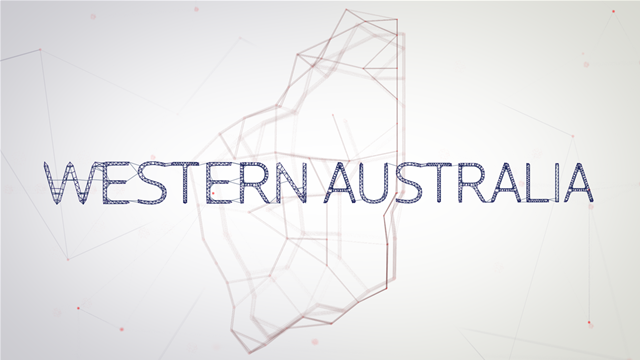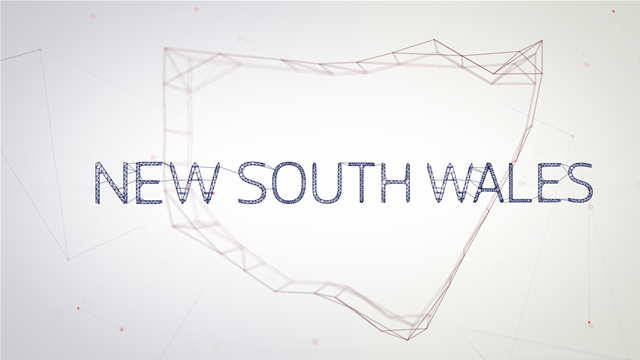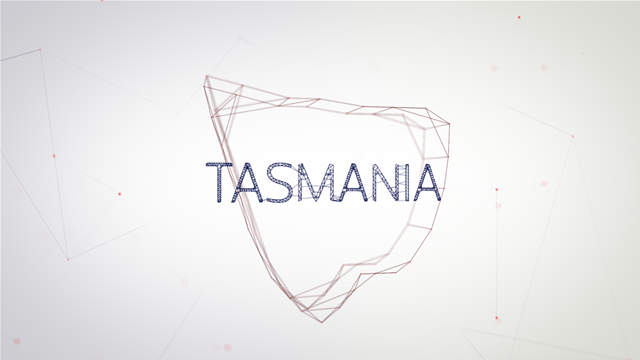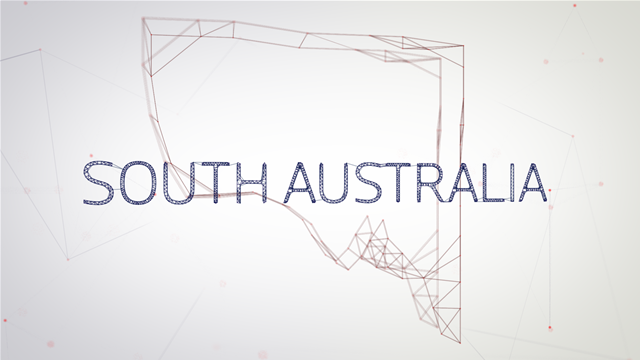

On paper, it’s a breakout year for digital and technology in Queensland.
Digital services responsibility has shifted internally, out of Communities, Housing and Digital Economy, and into the Transport and Main Roads (TMR) portfolio, under a machinery of government change.

More importantly, there’s a new three-year digital economy strategy and action plan, backed with $200 million in funding, new statewide plans for digital inclusion and cyber security, and a First Nations digital strategic plan.
That overarching strategy is organised around six key priorities: closing the digital divide and promoting inclusion, delivering contemporary digital services to customers, improving

connectivity for regional communities, using the power of digital to help Industries and businesses excel, creating a pipeline of digital talent both inside and outside of government, and creating a more digitally-enabled government.
It’s a substantial body of work, yet it would be a mistake to view the strategy as all-encompassing of the Queensland government’s digital efforts. There’s a lot more to digital and technology use in Queensland that’s currently going on behind-the-scenes, unseen - though this is set to change.
Four ways to engage
In some ways, it shouldn’t surprise that digital is much bigger than the headline announcements. The Customer and Digital Group, headed by Chris McLaren, is about 1900 people with domain expertise and responsibility spanning architecture, ICT investment, governance and assurance, data analytics, AI, cyber security, core infrastructure and shared services. Structurally, each Queensland government department has its own CIO or digital leader, and its own ICT strategic plan. Customer and Digital engages directly with those digital leaders “to help them drive a forward-looking agenda”, McLaren explains.

Engagement with department-based digital leaders often falls into one of four categories. First, the Customer and Digital Group is a supplier of core shared services - data centre, networking, secure internet gateway and the like. Second, the Group are custodians and owners of all technology policies and guidelines, and range from compulsory to more advisory in nature. The third type of engagement is around assurance, gating and review mechanisms “to facilitate the government making smarter technology decisions,” McLaren says. “We're going through a process of refreshing that [now]. We'll have a new digital investment governance framework published and endorsed hopefully in the next couple of weeks.”
The last type of engagement is facilitating whole-of-government technology investment decisions and procurement arrangements. “There's a whole range of areas where we're making a determined commitment that we're going to ‘buy once, use many’ [times],” McLaren explains. “We’re going to have deals with the ‘best of the best’ [technology vendors] and ensure we get value for money for Queenslanders.” Whole-of-government platforms or ecosystems procured in this fashion are positioned as being “core and common”. It may not be that the offering is a one-size-fits all; several common “flavours” or configurations may be offered, tailored to small, medium or large departments and agencies, as an example.
“The goal here is to give agencies a level of flexibility to do what they need to do to fulfil their obligations and deliver service...
...but get us operating more like a united front when it comes to digital investment, with the right level of homogeneity across our landscape.
— Chris McLaren chief customer and digital officer
“We're really trying to eliminate as much as possible, the need, the desire and and the effort of requiring agencies or departments to go and do their own thing,” McLaren says.
The Queensland government will target finance, HR, payroll, case management, workplace health and safety and service directory software needs initially. “There's no reason people need to go out and buy their own workplace health and safety product. We've got one, we've made a decision, it's core and common, and we want everybody to use that,” McLaren explains.
A digital ‘lay of the land’
It’s been 18 months since McLaren took over whole-of-government digital leadership in Queensland, but it’s been enough time to get a ‘lay of the land’: to survey the current state of play, and identify various strengths and weaknesses in the state’s digital approach.

There are a number of digital aspects where he considers the state is excelling - and its approach to developing a digital driver licence (DDL) that meets the ISO 18013-5:2021 Personal identification standard is one of them. “I think we're leading the country in terms of our alignment to ISO standards. We’re the first out of the gate with an ISO compliant digital driver licence and that will feed into our evolution of a broader portfolio of digital verifiable credentials,” says McLaren. The idea is to make the DDL into a verifiable credential that businesses can use to establish a person’s identity, without needing to scan or store identity data themselves.
The state’s work on building out a “customer digital services platform” also rates in McLaren’s view. It’s intended that citizens will be able to present and establish their identity with a credential of choice, with an identity broker in place to handle the verification checks. Considerable effort is also going into making the platform easy for agencies to “dock onto” - “kind of like [how] an Uber driver plugs into the Uber platform - making available the services they want to make available.”
The state’s whole-of-government cyber security centre and secure internet gateway services rate a special mention, as does its critical digital infrastructure - such as data centre-as-a-service (DCaaS) and connectivity. “We've got a 10-year digital infrastructure plan that will be out early in the new year, all things going well,” McLaren says.
He also sees strengths in the government’s ability to innovate digitally and find solutions to lesser-considered challenges. He cites as an example the state’s use of biometric reporting kiosks for low-risk offenders, which are used for check-ins and to manage court-imposed curfews. “At any point in time, Queensland's got about 20,000 low risk offenders that are out in the community. Digital has an Incredible power to help keep the community safe and to put more time back in the hands of our corrections officers and police to intervene where they need to.”
Introducing QChat
The Queensland government is also a fast-mover when it comes to setting guidelines and safe spaces for experimentation with generative AI. McLaren describes the state’s speed in preparedness and in getting guidelines out to agencies as being, in a way, “non-governmental”. In any event, that’s enabled the state to start exploring use cases, which so far span customer enablement, RegTech, productivity improvement and cyber security.

Where Queensland does appear to have excelled is that it has already stood up a safe space for experimentation. It is using the Azure OpenAI service as the technology foundation for what it has given the working name ‘QChat’. QChat is still in a “preview release”, and is gradually being opened to more departments and agencies. Given the Azure tenancy is open only to Queensland government employees, it’s considered a safe space for experimentation, as well as a way for agencies to centrally keep track of how their people use generative AI and why.
Within the Queensland government, a “thriving” AI community of practice is also now emerging - numbering 400 people so far, and continuing to increase in size. “They’re leaning in and getting involved in how we can use this for better service delivery, better policy development, regulation reduction etc,” McLaren says.
Case study: Digital inclusion in First Nations communities
Queensland is home to 16 First Nations communities, including some of the most disadvantaged such communities, but through a three-year-long pilot project, it hopes to bring digital transformation to these places. The result is First Nations call centres and digital service centres, which are set up through a public-private partnership. People from the local communities, or with links to the communities, receive 12 weeks of business and technology skills training, and then work out of the centres, answering calls on behalf of private sector companies including Fujitsu and Telstra.
“We establish a business that's effectively a mini service provider, providing digital services to a range of corporations and government entities - it could be IT service desk, it could be outbound servicing, it could be application testing. We're looking at a whole range of different services,” says McLaren. “The programme shows the power of digital to bring amazing economic development and opportunity and prosperity for some of our most disadvantaged communities. It’s a really unique model and something that we're sharing across a lot of other jurisdictions”.
Scorecard
| Does Queensland have a digital strategy? Is it up-to-date (i.e. released in the last two years?) | Yes |
| Does Queensland have a cloud strategy? Is it up-to-date (i.e. released in the last two years?) Does it contain a cloud-first or cloud-only approach to new projects? | Yes |
| Does Queensland have a cyber security strategy? Is it up-to-date (i.e. released in the last two years?) | Partial |
| Does Queensland have an AI (including generative AI/LLM use) strategy? Are there plans to update or issue a specific strategy around generative AI and LLM use? | Yes |
| Is there a specific whole-of-government ICT/IT strategy (as distinct from your digital strategy?) | Yes |
| Does Queensland have a minister responsible for digital – or a minister with clear IT authority? | Yes |
| Does Queensland mandate cyber security training for all public servants? | Yes |
| Does Queensland have a whole-of-government CIO (or equivalent) and a steering committee of CIOs? | Yes |
| Does Queensland have clear policies for cyber security, cloud, data and privacy? | Yes |
| Is Queensland taking steps to address issues with traditional CapEx/OpEx IT funding models? | Yes |
| Is Queensland monitoring the progress of IT and digital projects after sign-off? | Yes |
| Is Queensland aware of what needs fixing with respect to whole-of-government IT policy and procurement? | Yes |
| Does Queensland have a cyber security operations centre? | Yes |
| Does Queensland have a central service delivery agency and is it working to improve digital interactions? | No agency, but it is working to improve digital |
| Is Queensland building in-house digital skills? | Yes |
| Does Queensland have a small to medium enterprise (SME) buying policy? Is there a percentage target for the amount of government IT budget to be spent with SME-sized providers? | Yes |
| Has Queensland developed any digital services that are being used by other states/territories? | Yes |
State Champions
The iTnews State Government Champions have worked closely with the governments throughout Australia. Their processes have enhanced the way our state governments are able to deliver their services to the people of Australia.
We are proud to present the 2023 State Government Champions, and we will showcase the work they are doing in the coming days.
















